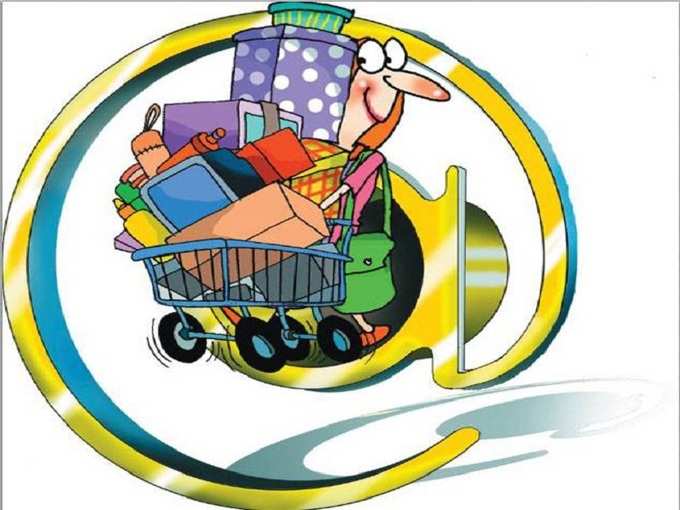 eCommerce has boomed in India over the past couple of years primarily due to the rise in mobile Internet access and improvements across payment and delivery infrastructures. India is also seeing tier-II and tier-III cities showing strong momentum for eCommerce with an increased demand and appetite. According to a recent study by eMarketer, Asia Pacific leads the world in terms of the number of retail companies moving to
eCommerce has boomed in India over the past couple of years primarily due to the rise in mobile Internet access and improvements across payment and delivery infrastructures. India is also seeing tier-II and tier-III cities showing strong momentum for eCommerce with an increased demand and appetite. According to a recent study by eMarketer, Asia Pacific leads the world in terms of the number of retail companies moving to Another study by
So what led to the growth and will 2016 continue to hold the momentum? Whatever the answers might be, there is no doubt that eCommerce is going to drive the growth of India’s economy. Anthony Hearne, Regional Director, Sea and India,
1. 2016 will be the year of mobile eCommerce in India. No REALLY this is the year!
A surge in the number of smartphones and Internet users is boosting eCommerce, and the rise in content marketing is directly linked to this trend. A recent study conducted by us at Outbrain shows that Indians are consuming 41% of their content through smartphones, 76% of which is consumed on
Thanks to Android-based platforms, even low-income segments are able to afford a smartphone, which acts as the Internet device of choice. Brands are increasingly using content marketing to engage with their audiences on mobile, and convert readers into buyers. As part of this trend, mCommerce will swiftly take over eCommerce with many predicting that by the end of this year more than 50% of total online orders will already come from mobiles instead of desktops. Myntra, a leading Indian fashion retailer, has declared that they will be shifting their marketing efforts from desktop to mobile-only by the end of this year. Another leading Indian eCommerce player,
2. Messaging apps are the next big thing
Messaging apps are the next big thing and their potential impact on the content publishing ecosystem shouldn't be underestimated. In terms of sheer numbers, the world's 4 leading messaging apps now have as many monthly users as the top four social platforms. And they're growing much faster.
Significantly for publishers, messaging apps are used for much more than messaging: users consume and share videos, photos, content and news. And increasingly, they're emerging as platforms for eCommerce. In China, Weixin, the local version of the WeChat app, enables 600 million people each month to book taxis, check-in for flights, play games, bank, make doctor’s appointment, video conference call. Facebook's Messenger is following suit.
Messaging apps provide enormous potential for publishers - and brands - to embed themselves in their customers' mobile lives.
If you have not seen the content experience in Snapchat (yes, SnapChat does editorial content) do yourself a favour and have a look at the ‘Discover’ section. Publishing brands like CNN, Buzzfeed and Mashable have produced customer content experiences on the Snapchat platform that creates some great new opportunities for brands to connect with an audience.
3. Tier-II & Tier-III cities will drive the highest growth for eCommerce in India
For most e-tailers, 50% of their revenues is already coming from tier-II and tier-III cities.
Various studies have pegged the size of the Indian middle class between 350–400 million people, out of which approximately 100 million people live in tier-II and -III cities like Lucknow, Jaipur, Ludhiana and Gurgaon. According to one of these studies, the highest demand for online retail comes from approximately 4,000-5,000 towns and cities in India, but there is no significant presence of physical retail in almost 95% of these locations due to high real estate costs, which limit organized retail from expanding.
4. Steady growth in use of videos as a key content format
Brands are investing more and more in video content, and it’s not difficult to understand why. Video engages more of a human being’s senses, and it can be a great vehicle for delivering a message and connecting with an individual in a short amount of time. As journalist-turned-Content Director for Visa, Kris Leboutillier puts it, “Nobody ever tells me they want a 1,000-word article.” Also, video is highly shareable.
There has been a phenomenal growth in the use of video content and this is set to continue in 2016, particularly across mobile platforms like
A report from Q2 2014 by online video technology platform
5. Rise in Content Marketing
Marketers cannot revert back to the historically popular tactics of push marketing. In fact, in 2016 brands will be spending a lot of time creating more relevant and inspiring content than ever before.
Smart eCommerce and well executed Content Marketing complement each other and ensure that there is engagement between brand and consumer at multiple touch points throughout the purchase cycle. It is true that digital as a discipline still forms a relatively small part of overall marketing spend in India and that these are both (rapidly) evolving areas. But, as advertising becomes increasingly targeted and personalized, and brands strive to find better ways to connect with their target audience, Content Marketing will continue to evolve and become the key to their future strategies.
(Image credits: indiatimes)
